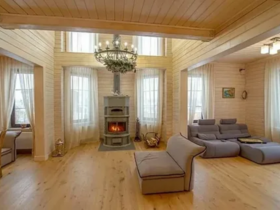The concept of “design” (Design) first sounded in the 16th century and quickly took root throughout Europe. This concept was originally in tune with the Italian expression “Designo Intero”, which means “Divine idea” born of the artist.
Time extended the boundaries of this concept. In the modern world, designers work in almost all areas of human activity. A special place in this list is the interior design. Man always attached great importance to the objects that surround him. In addition to a purely functional load, the interior design is designed to satisfy the aesthetic needs of a person, creating a comfortable space around him.
Any dwelling sooner or later acquires peculiar features in accordance with the habits and preferences of its master. When solving the problem of developing the design of the premises, in addition to stylistic laws, it is necessary to take into account the personal and psychological aspects of design, which will help create the most harmonious atmosphere of personal space.
Psychological aspects of interior design can be divided into two main groups — harmonic and stimulating. The harmonic approach to design involves the design of the premises in a style that is most appropriate for the spiritual state or the psychotype of the owner. With the help of furniture, accessories, decor elements, color scheme, an atmosphere is created that provides the customer with a state of comfort and rest. In the case of using a stimulating approach, the designer tries to emphasize the most advantageous sides of the owner’s personality, or smooth out negative. So, for example, the optimistic style of country or high-tech, filled with bright colors, is able to encourage a person prone to melancholy or depression. And the interior of the classical style, made by pastel colors, is able to bring into a calm contemplative state of an unbalanced person.
An ideal design option would be an equal ratio of both functions. But to carry out such a balance in practice is a rather difficult task, especially for a non -professional. Nevertheless, using the advice of a specialist and relying on your taste, you can try to equip your own home according to the laws of design psychology.













Оставить коммент.